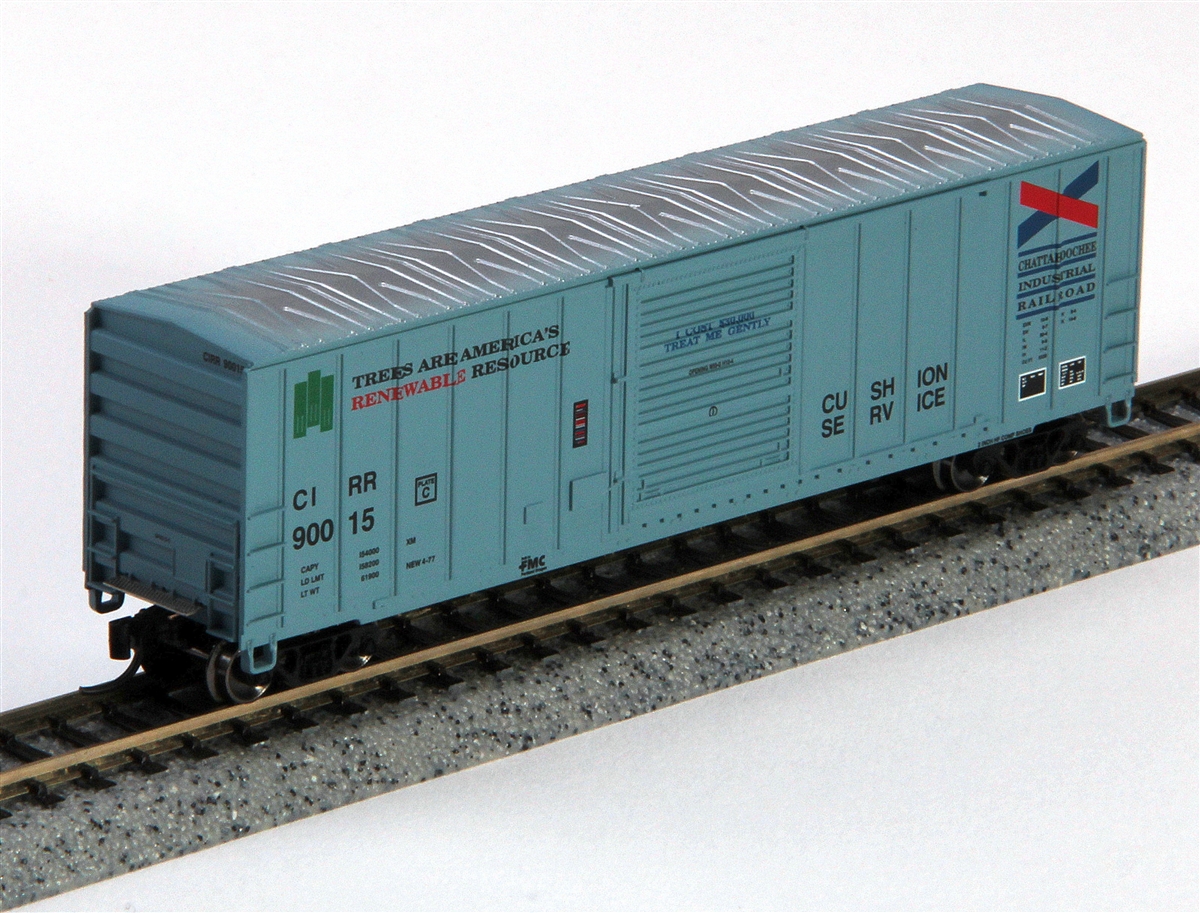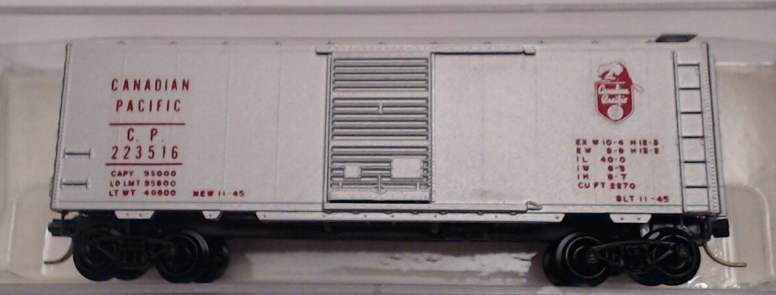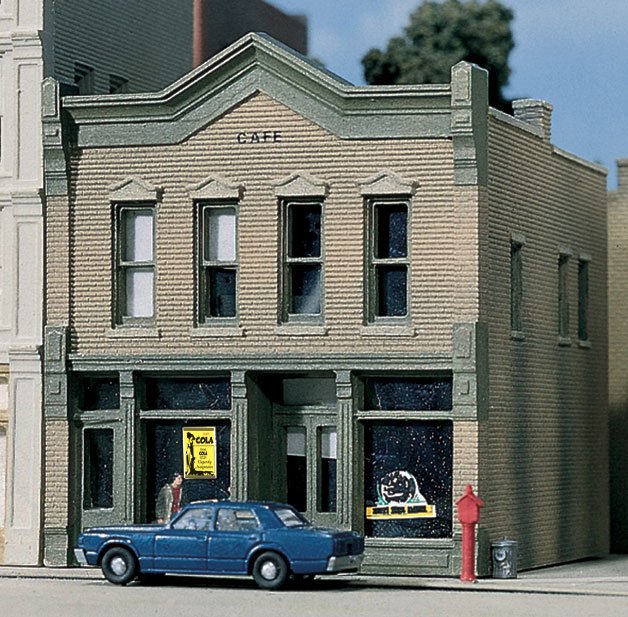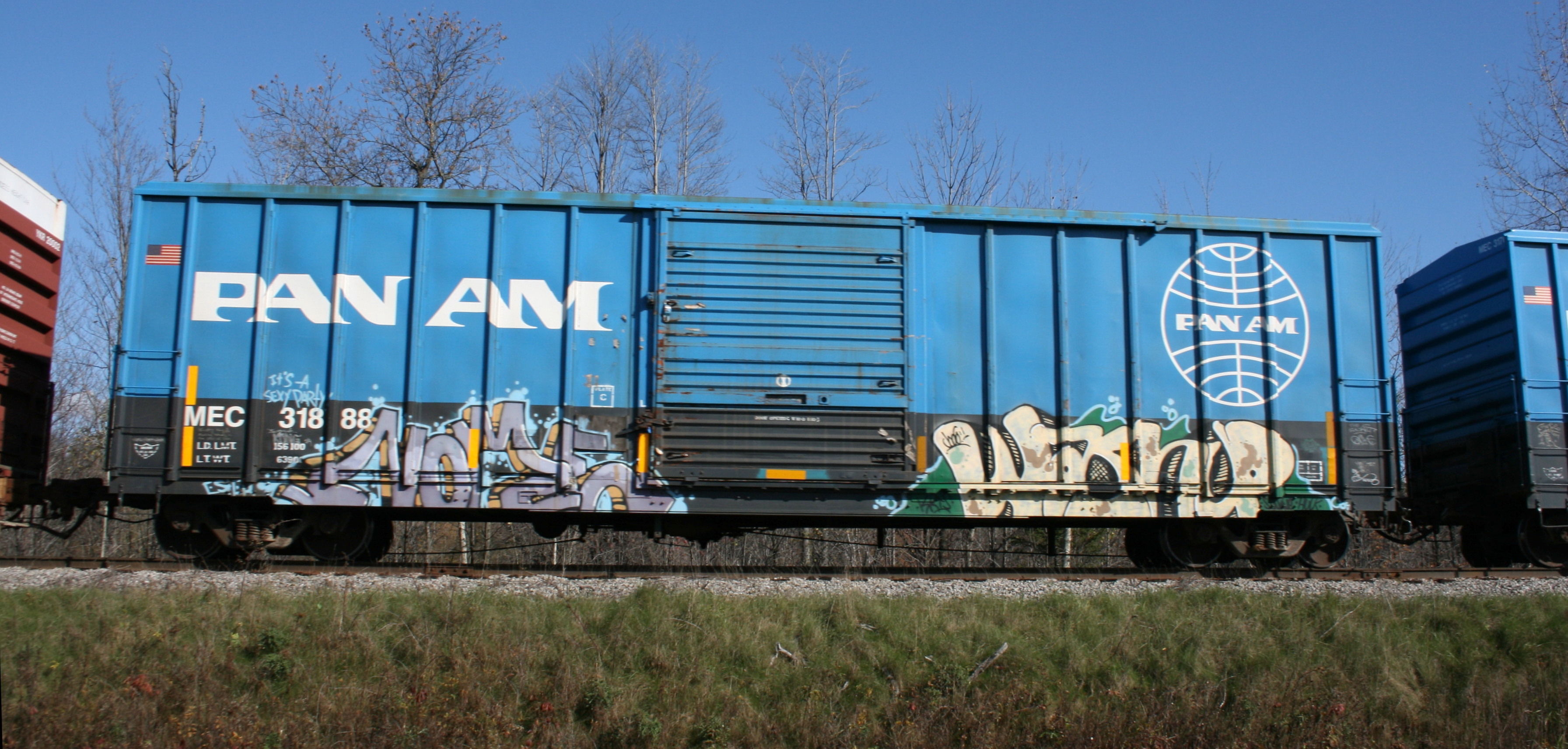Model Information: These Fox Valley models feature crisp print detail, sharp lettering, Micro-Train couplers and photo-etched walkways.
Prototype History: It was the mid 1970s, and the incentive per diem box car boom was just beginning. New, brightly painted box cars seemed to appear overnight. Many were lettered for various short lines. FMC (Food Machinery Corporation) was a significant builder of many of these cars. The 50’ outside post, non-terminating end box car, became the foundation for new per diem cars built in the 1970s. The 50’ FMC cars also varied in door configuration and style to better suit each customer. These cars can still be seen today at work (2017) on many ralroads.
The main difference between the 5077 cu. ft cars built by FMC vs the 5277-5347 cu. ft cars built by the same manufacturers is the overall height of the car, the smaller 5077 cars were Plate B while the larger 5277-5347 cars were Plate C.
The main difference between the 5077 cu. ft cars built by FMC vs the 5277-5347 cu. ft cars built by the same manufacturers is the overall height of the car, the smaller 5077 cars were Plate B while the larger 5277-5347 cars were Plate C.
Road Name History: The CIRR was chartered in 1961 to build a line between Hilton and Saffold in southern Georgia. Operations began in 1963. For most of its history, the line was owned by paper giant Georgia-Pacific whose huge mill in the area is the source of most of CIRR's traffic. Interchanges are with CSX, NS and Georgia Southwestern. The motto for the Chattahoochee Industrial is "Better by a Dam Site" which appeared on many of their freight cars.
Although the line is just a touch over 15 miles long, around 10 locomotives are required to handle the heavy traffic. From startup into the 90s, most of the work was done with secondhand Alco RS-1’s.
In 2004, Georgia-Pacific sold many of their railroads, the CIRR included, to the Genesee & Wyoming group. Today, the RS-1’s are gone although several have been made into slugs, and secondhand EMD's now do the work.
Although the line is just a touch over 15 miles long, around 10 locomotives are required to handle the heavy traffic. From startup into the 90s, most of the work was done with secondhand Alco RS-1’s.
In 2004, Georgia-Pacific sold many of their railroads, the CIRR included, to the Genesee & Wyoming group. Today, the RS-1’s are gone although several have been made into slugs, and secondhand EMD's now do the work.
Brand/Importer Information: Fox Valley Models is a small supplier of
model railroad and related products. FVM
started by finding solutions to different
challenges that model railroaders were
faced with. Our first products resulted
from a need to equip custom built
passenger cars with tinted windows made
of an ideal material; thin, flexible, easy to
cut, simple to install, available in multiple
colors and be affordable. We met those
needs and even included a frosted
version for the car's lavatory windows.
Other challenges inspired additional products including wooden grade crossings, trestles and different lineside structures. As our product line expands, input and requests from friends and customers help shape the product selection further.
Future products, under development, include more parts, structures, details and rolling stock. We strive to offer a good quality product at an affordable price.
Other challenges inspired additional products including wooden grade crossings, trestles and different lineside structures. As our product line expands, input and requests from friends and customers help shape the product selection further.
Future products, under development, include more parts, structures, details and rolling stock. We strive to offer a good quality product at an affordable price.
Item created by: gdm on 2017-06-19 11:58:01. Last edited by baggedbird on 2025-03-08 23:35:33
If you see errors or missing data in this entry, please feel free to log in and edit it. Anyone with a Gmail account can log in instantly.
If you see errors or missing data in this entry, please feel free to log in and edit it. Anyone with a Gmail account can log in instantly.











